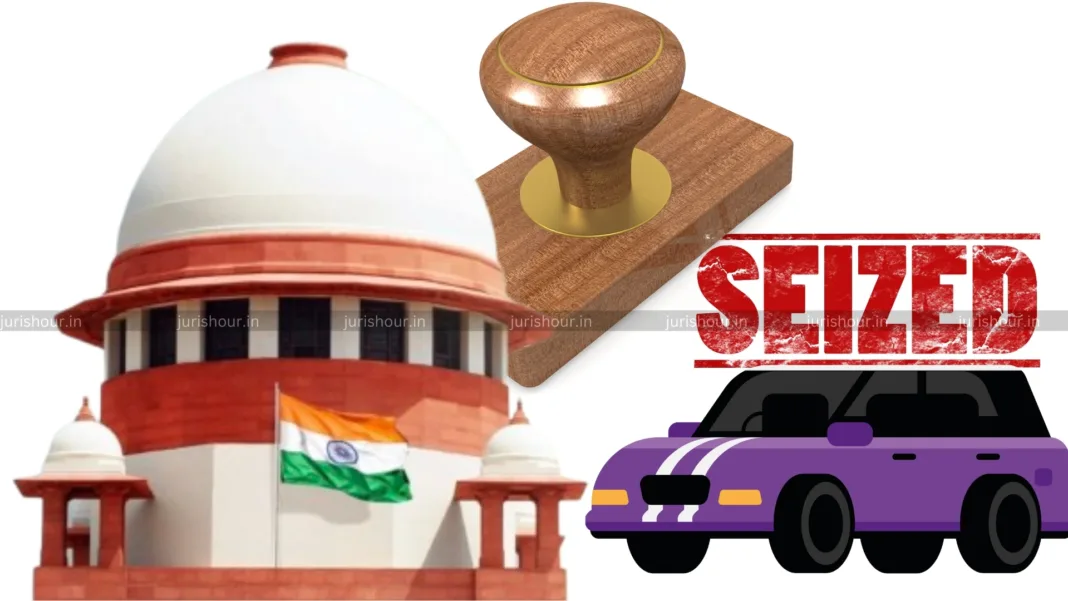This Article pertaining to Interim Release of vehicle / conveyance seized under the NDPS Act, 1985 – Divergence of views continues is Authored by A. Rangadham, Superintendent (AR), Customs, Excise and Service Tax Appellate Tribunal (CESTAT), Hyderabad.
Analysis of the Judgement of the Hon’ble Supreme Court in the case of Bishwajit Dey v. The State of Assam – Crl. A. No. 87 of 2025 dt. 07-01-2025
The issue of interim release of vehicles / conveyances soon after their seizure under the NDPS Act has been hanging in judicial limbo. The Supreme Court in the cited judgement, has acknowledged that divergent views have been expressed by various courts on the subject matter.
Having acknowledged the divergent views by various courts, yet the Hon’ble Supreme Court in the cited judgement stated that they are confining themselves to the facts of the instant case and to the context of ‘owner’ and do not lay down any general proposition of law.
Findings in the cited judgement:
- Seized vehicles can be confiscated by the trial court only on conclusion of the trial.
- The court must give an opportunity of hearing to the person who claims right to the seized vehicle before passing an order of confiscation
- The seized vehicle is not liable for confiscation if the owner of the seized vehicle can prove that the vehicle was used by the accused person without his knowledge or convince and he had taken all reasonable precautions against such use of the seized vehicle by the accused person
- There is no specific bar / restriction under NDPS Act for return of any seized vehicle used for transporting narcotic drug or psychotropic substance in the interim pending disposal of the criminal case
- The court can invoke the general power under section 451 and 457 of Cr.P.C for return of the seized vehicle pending final decision of the criminal case
- The discretion to release the vehicle in the interim lies with the trial court and this should be exercised in accordance with law in the facts and circumstances of each case.
- Undoubtedly the vehicle is a critical piece of material evidence and may be required for inspection to substantiate the prosecution’s case. This requirement can be met on superdari like videography and still photographs to be authenticated by the investigating officer, owner of the vehicle and accused by signing the said inventory as well as restriction on sale / transfer of the vehicle.
- Four scenarios envisioned by the Supreme Court –
- Where the owner of the vehicle is the person from whose position contraband is recovered
- Where the contraband is recovered from the possession of the agent of the owner i.e., like driver or cleaner hired by the owner
- Where the vehicle has been stolen by the accused and contraband is recovered from the stolen vehicle
- Where the contraband is seized from a third-party occupant of the vehicle without any allegation that the contraband was stored and transported in the vehicle with the owner’s knowledge and connivance
- In the case of (a) and (b) the owner of the vehicle and / or his agent would necessarily be made an accused
- In the case of (c) and (d) the owner of the vehicle and / or his agent would not be arrayed as an accused
- In the case of (a) and (b), the vehicle may not be released till reverse burden of proof is discharged by the accused – owner
- In the case of (c) and (d), where no allegation has been made against the owner or his agent, the vehicle should normally be released in the interim or superdari subject to the owner furnishing a bond that he would produce the vehicle as and when required by the court and / or he would pay the value of the vehicle as determined by the court on the date of release if the court is finally of the opinion that the vehicle needs to be confiscated
The Hon’ble Supreme Court in the case of Sainaba vs. State of Kerala and Another, 2022 SCC OnLine SC 1784 has taken a similar view when there are no allegations against the owner / agent of the vehicle under seizure.
Following the above cited judgement the following points needs appreciation:
The Hon’ble Supreme Court has not gone into the role of the Drug Disposal Committee [DDC] in disposal of the seized vehicle especially in view of its judgement in the case of Union of India v. Mohanlal [(2016) 3 SCC 379]. In Mohanlal case, the Court directed that all drugs and conveyances have to be disposed of by the DDC, after following the procedure laid down in Sec. 52A(2) of NDPS Act, which is – inventory, taking photographs and drawing of samples. As per scenario (a) and (b) above, the question of release of seized vehicle is now held – will not arise. Once, the inventory is completed, the question that now arises is, can the DDC dispose of the vehicle.
Also, the power of confiscation vests exclusively with the Trial Court in view of Sec. 60 of NDPS Act, 1985. In view of the statutory provision, pre-trial disposal of the vehicle by DDC, may not be proper. Sec. 52A(1) also makes it clear that DDC need not seek the approval of the Trial Court for disposal of the vehicle, once the procedure prescribed under Sec. 52A(2) is followed. This conundrum has to be resolved by the Hon’ble Supreme Court in view of the divergent views of various High Courts. Certain courts have held that DDC is free to dispose of the vehicle in view of Mohanlal judgment and other courts have relied upon Sec. 60 and not allowed disposal of the vehicle.
The uncertainty in implementing the law must be resolved at the earliest.
Read More: AO’s Order Can’t Be Treated As Prejudicial To Interest Of Revenue When Permissible In Law: ITAT


